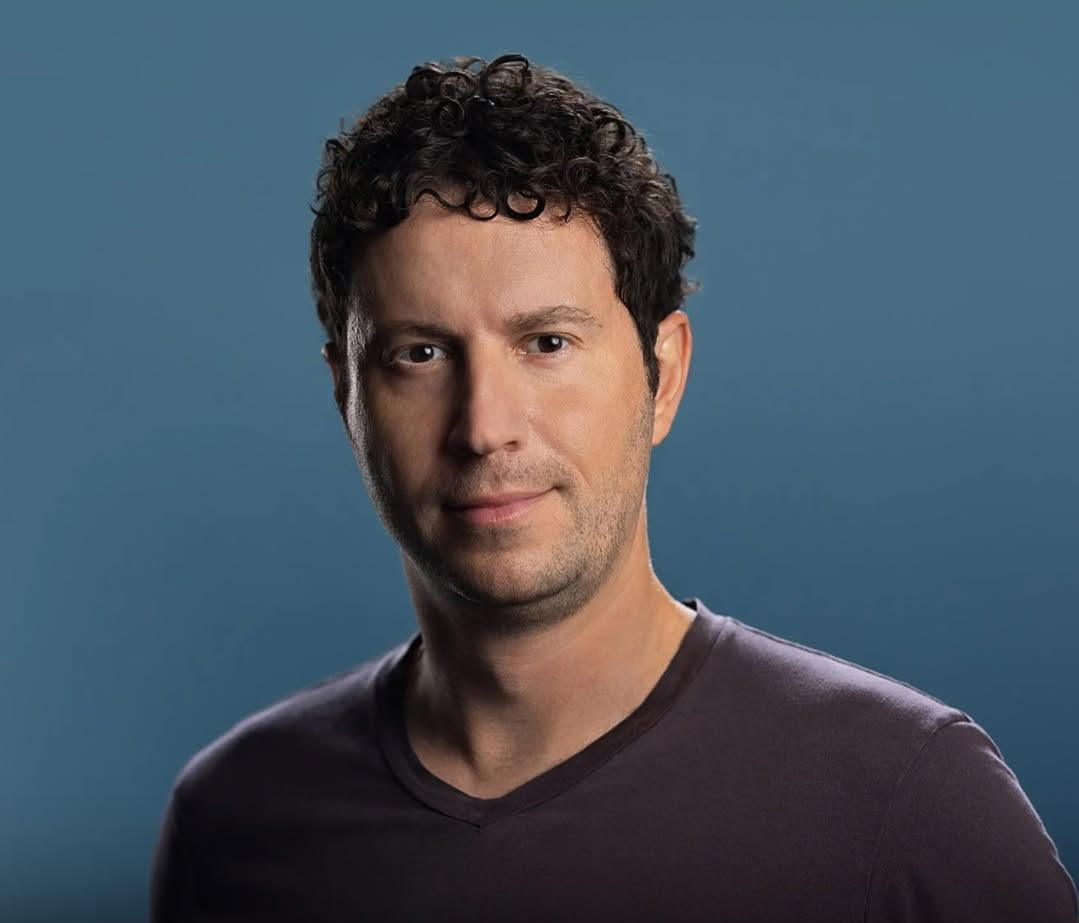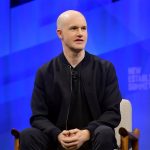Daniel Nadler and OpenEvidence
The current landscape of medical research is a vast and ever-expanding ocean. For physicians, staying afloat, let alone navigating it effectively, has become an almost impossible task, leading to burnout and a dangerous gap between cutting-edge discoveries and patient care. This is the monumental challenge that Daniel Nadler, a serial entrepreneur and computer scientist, set out to conquer with OpenEvidence. His journey, marked by a deep understanding of both AI and human needs, is reshaping how doctors access, interpret, and apply medical knowledge, promising a future where clinical decisions are always informed by the latest, most reliable evidence.
The Architect of Disruption: Daniel Nadler's Journey
Daniel Nadler's path to OpenEvidence is paved with a distinctive blend of academic rigor and entrepreneurial acumen. A Canadian-born technology entrepreneur, artist, and poet, Nadler holds a Ph.D. from Harvard University, where his doctoral thesis explored complex econometric and statistical approaches to modeling financial derivatives. His unique ability to connect disparate fields, from mathematics and classics to poetry, underpins his approach to technology: seeking the needed balance between expectation, utility, and serendipity {1}.
Before OpenEvidence, Nadler co-founded Kensho Technologies in 2013, an artificial intelligence company focused on financial intelligence. Kensho developed machine learning systems that allowed users to perform sophisticated financial analysis without needing to write code, aiming to "democratize quantitative analysis" for Wall Street asset managers. This venture was a significant success, acquired by S&P Global for $550 million in 2018 {1}.
It was this background in building powerful, accessible AI for complex data sets, coupled with an awareness of the mounting crisis in healthcare, that spurred Nadler to found OpenEvidence in 2021. He recognized that while medical knowledge doubles at an unprecedented rate (some estimates suggest every 73 days), physicians simply cannot keep pace with the influx of new research, guidelines, and clinical trial data. This information overload contributes significantly to clinician burnout and creates a barrier to delivering optimal patient care. Nadler’s vision for OpenEvidence was clear: to build an "AI copilot" that frees physicians from drowning in data, allowing them to focus on patients {3}.
Related: The Role of Generative AI in Healthcare App Development
OpenEvidence: Unlocking Actionable Intelligence for Clinicians
OpenEvidence is designed to be the ultimate digital assistant for physicians. It ingests millions of peer-reviewed studies, clinical trial data, and guideline updates in real time. Leveraging advanced natural language processing (NLP) and proprietary evidence-ranking algorithms, the platform transforms this raw data into precise, actionable insights.
Key functionalities that embody Nadler’s vision of accessible, evidence-based care include:
- Executive Summaries: OpenEvidence generates concise, one-page overviews that highlight key findings, study strengths, and their relevance to specific patient profiles. This drastically cuts down on the time physicians spend sifting through lengthy papers.
- Interactive Citations: Users can click through to original papers, each accompanied by an automated "trust score." These scores are based on crucial criteria such as journal reputation, sample size, and statistical rigor, empowering physicians to quickly assess the reliability of evidence {4}.
- Custom Alerts & Decision Support: Physicians can define specific topics (e.g., "second-line therapies for NSCLC" or "management of chronic hypertension") to receive real-time notifications of relevant new publications. The platform also offers inline recommendations that can integrate with electronic health records (EHRs), suggesting optimal dosing or flagging potential drug interactions, acting as a real-time clinical decision support tool {3}.
By automating the arduous tasks of literature review and synthesis, OpenEvidence reduces research time from hours or days to mere minutes, enabling clinicians to deliver truly up-to-date, personalized care at the point of need.
Related: How Elite Leaders Build Unshakeable Trust in the Virtual Workplace
The Business and Impact of OpenEvidence
Under Nadler's leadership, OpenEvidence has not only proven its technological prowess but has also forged a compelling business model poised for significant impact and growth.
Tackling Physician Burnout and Enhancing Patient Outcomes: The direct benefits of OpenEvidence speak to its profound impact on the healthcare ecosystem:
- Efficiency Gains: Physicians report slashing preparation time by up to 80%, freeing them from manual article searches.
- Decision Confidence: The evidence-ranking and contextualization features reduce uncertainty, particularly when guidelines might conflict, leading to more confident clinical decisions {4}.
- Burnout Mitigation: By simplifying research workflows and mitigating cognitive overload from information deluge, OpenEvidence directly addresses a leading driver of clinician burnout. Nadler has explicitly stated that "when physicians' lives are hard, patients' lives are harder," emphasizing OpenEvidence's commitment to supporting both {3}.
- Continuous Learning: Built-in CME (Continuing Medical Education) modules seamlessly integrate learning into daily practice, turning every patient case into an opportunity for accredited professional development. Hospital systems deploying OpenEvidence have reported 20–30% improvements in guideline adherence, leading to better patient outcomes and reduced practice variations {2}. The platform has seen remarkable adoption, with over 40% of U.S. physicians using it daily, making it one of the fastest-growing healthcare applications ever built {3}.
The Competitive Edge: OpenEvidence vs. General AI: While large language models (LLMs) like ChatGPT can generate overviews of medical topics, Nadler's strategic differentiation lies in OpenEvidence's specialized design for clinical decision support. OpenEvidence's superiority stems from:
- Up-to-the-minute Access: OpenEvidence continuously ingests new publications in real time, ensuring clinicians have access to the absolute latest evidence, which general LLMs often lack.
- Evidence Ranking and Trust Scores: Proprietary algorithms assign trust scores based on rigorous criteria such as statistical significance and publication venue, a critical feature absent in general-purpose LLMs {4}.
- Regulatory Alignment: Unlike general LLMs, OpenEvidence is explicitly designed with compliance for HIPAA, GDPR, and medical device regulations in mind, a non-negotiable for clinical applications. In head-to-head comparisons, physicians rated OpenEvidence’s summaries as significantly more accurate and clinically actionable than ChatGPT outputs when tested on real patient scenarios {4}.
A Sustainable Model: Accessibility and Growth: OpenEvidence employs a strategic freemium model to drive widespread adoption:
- Free Tier: Offers basic summary reports and monthly alerts on a limited number of topics, making foundational evidence accessible to individual practitioners and trainees.
- Pro Tier: Provides unlimited topic tracking, EHR integration, and CME credits for a subscription fee.
- Enterprise Tier: Custom onboarding, priority support, and advanced analytics are available for hospital networks, priced on a per-seat or per-bed basis. This model, along with Nadler's approach of treating doctors as consumers, has allowed for rapid organic growth {5}. The company has also secured significant investment, raising a $210 million Series B round, valuing OpenEvidence at $3.5 billion. This funding, co-led by Google Ventures and Kleiner Perkins, validates Nadler’s vision and provides capital to expand strategic content partnerships and further scale its AI-powered clinical research tools {2}. Academic institutions and under-resourced clinics can also apply for no-cost grants, reinforcing a commitment to broad access.
Related: Evaluation of ROI: Cost-Effective Outsourcing Measures for Healthcare Offices
Challenges on the Horizon
Despite its rapid success, OpenEvidence, under Daniel Nadler’s leadership, continues to navigate inherent challenges in the health tech space:
- Cost Considerations: Enterprise licensing, while tiered, can be a significant investment for smaller practices, requiring strong ROI justification.
- AI Hallucination Risks: While mitigated by human-in-the-loop review for critical recommendations and specialized training data, the risk of misinterpretation or "hallucinated" citations, inherent to any NLP tool, remains a constant vigilance point.
- Data Privacy: Integration with sensitive EHRs demands unyielding HIPAA compliance and robust encryption to safeguard patient information, a continuous area of focus for the company.
- Adoption Curve: Clinicians accustomed to traditional literature review may require dedicated training, and integration timelines can vary depending on complex hospital IT infrastructures.
Conclusion
By marrying sophisticated AI with rigorous evidence-ranking and a profound understanding of physician needs, Daniel Nadler’s OpenEvidence offers a lifeline to overworked physicians drowning in data. The company's strategic growth, validated by substantial funding and widespread adoption, underscores its potential to become the new global standard for evidence-based medical decisions. While challenges around cost, integration, and AI refinement remain, OpenEvidence's proven efficiency gains and enhanced decision confidence position it as an indispensable tool in the modern clinic. As healthcare continues its digital transformation, Daniel Nadler stands at the forefront—empowering doctors to spend less time reading and more time healing, fundamentally reshaping the future of medical practice.
Related: How State Healthcare Policies Are Affecting the Workplace in 2025
Sources
- Daniel Nadler - Wikipedia. (n.d.).
- AI Magazine. (2025, July 17). How OpenEvidence AI is Transforming Clinical Decision-Making.
- GV (Google Ventures). (2025, July 15). OpenEvidence: The Leading AI App for Doctors.
- PMC (PubMed Central). (2025, April 16). The Use of an Artificial Intelligence Platform OpenEvidence to Augment Clinical Decision-Making for Primary Care Physicians.
- Sequoia Capital. (2025, March 4). The AI Product Going Viral With Doctors: OpenEvidence, with CEO Daniel Nadler.
- Forbes. (2025, July 18). Daniel Nadler.














